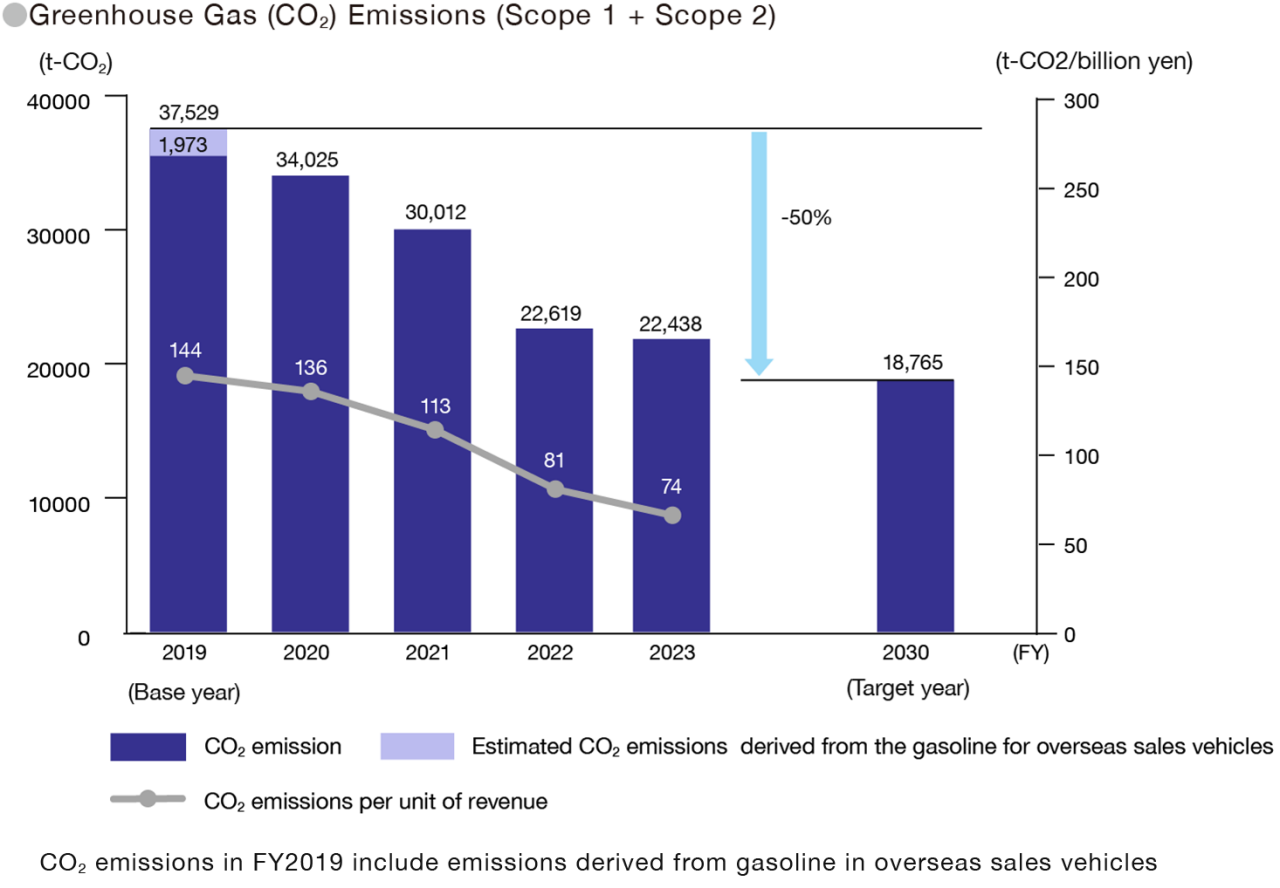Measures against Climate Change
Santen strives to help mitigate climate change by reducing its CO2 emissions, utilizing low-carbon resources and energies, and other means.
Information on measures against climate change is disclosed in Environment Data
Reduction of Greenhouse Gas (CO₂) Emissions from Santen
Santen makes efforts to reduce CO2 emissions aiming for net zero greenhouse gas emissions.

The CO2 emissions in FY2023 was 22,438 tons which is 0.8% reduction from FY2022. CO2 emissions per unit of revenue was 74 t-CO2 per billion yen which is 8.3% decrease from FY2022, due to the start of solar power generation at the Suzhou Plant in China in October 2023 and the Noto Peninsula Earthquake in January 2024, which affected operation at the Noto Plant. We also properly manage chlorofluorocarbons (CFCs), which have an impact on global warming, and are below the legal reporting standards in Japan, where the majority of our products are produced.

Reduction of Greenhouse Gas (CO₂) Emissions from our Supply Chains
In Japan, we assess not only Greenhouse Gas (CO2) emissions from Santen, but also those from Scope 3, in other words, our supply chains resulting from the purchase of raw materials, the distribution of products, and the movement of employees and strive to reduce CO2 emissions. From FY2023, to improve calculation accuracy, the boundary of Scope 3 Category 2 (Capital goods) was expanded from “All of the facilities and sales offices in Japan” to “All of the facilities and sales offices in Japan and Santen Pharmaceutical (China) Co., Ltd.”. In addition, Scope 3 Category 3 (Fuel and energy related activities not included in Scope 1 and Scope 2) was revised from “emissions from electricity procurement” to “emissions from all fuels and energy procurement”. Therefore, total Scope 3 CO2 emissions amounted to 196,579 tons, and the emissions per unit of revenue were 1,119 tons per billion yen in FY2023.